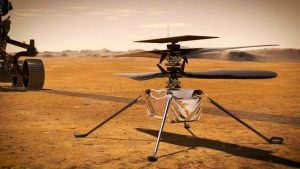Why do things fall on Earth?

The English scientist, Sir Isaac Newton (1642–1727), who was reputed for becoming Professor of Mathematics in Cambridge at the age of 26 years was sitting under an apple tree, in a contemplative mood, and was inspired by seeing an apple fall, or perhaps, an apple fell on his head.
In 1687, he formulated and published his Law of Universal Gravitation in a book, Philosphae Naturalis Principia Mathematica (Mathematical Principles of Natural Philosophy).
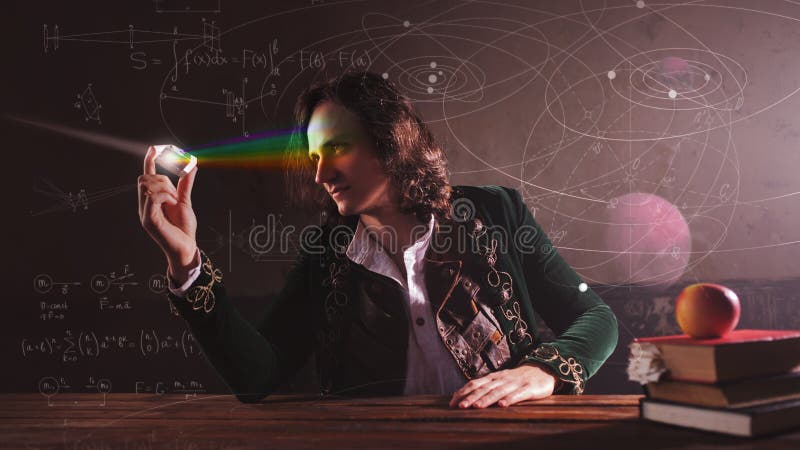
The law states that there is gravitational attraction and this attraction between two bodies is directly proportional to the product of their masses and inversely proportional to the square of the distance between them.
Another way of saying the same thing is that gravity increases with the mass of the body and decreases with distance.
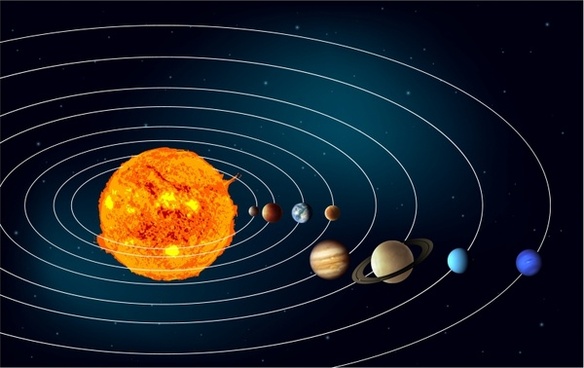
This Law of Universal Gravitation explains why the heavenly bodies, by a delicate balance in mutual pull, are in orbit.
The Earth revolves round the Sun because the Sun is bigger with mass that is 343,000 times more, and volume 1.3 million times more than the Earth.
The Earth is 81 times more than the Moon in mass.
Put in another way, the Moon is 1.2% the mass of the Earth and so the Moon revolves round it.

It does so every 27.3 days.
Since gravity depends on mass, the effect of gravity on a person in the Moon is smaller, about one-sixth that on that person on Earth.

Newton devoted much of his life to intellectual pursuits.
He never married and had no child even though he lived to be 84 years old.
When he died in 1727, he was buried in Westminster Abbey, London, where kings of England are buried.
The law of Universal Gravitation was not his only major discovery.
He co-discovered Calculus, a branch of Mathematics that deals with differentiation and integration or rates of increase/decrease, independently, but at about the same time in 1684 as the German mathematician, Gottfried Wilhelm Leibniz (1646 –1716).

Newton also propounded the laws of motion which are in three parts: The first states that every body continues in its state of rest or uniform motion in a straight line unless impressed forces act upon it.
This is known as Inertia and explains what is obvious – that a body at rest will remain so unless a force moves it.
If it is moving, it has to continue at a constant speed and in a straight line, unless a force acts on it.

The second is that the impressed force is proportional to the change of momentum per unit which it produces and the change of momentum takes place in the direction of straight line along which the force acts.
This means that the body will change its speed in a way that is directly proportional to the force.
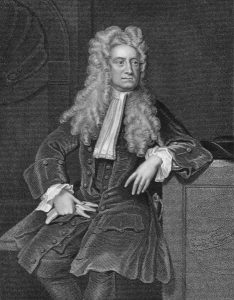
For instance, in a given body, if the force doubles, the acceleration doubles.
Or, if the mass of the body is halved and the force is unchanged, the acceleration also doubles.
Newton’s third law of motion is that action and reaction are equal and opposite.

The law that interests us here is the second law of motion which explains why a bigger object will want to fall slower than a smaller one when both are acted upon by same force.
However, Newton’s Law of Universal Gravitation shows that every body attracts other bodies and this attraction is stronger with mass (and proximity).
So, the overall effect is that the bigger body will (by the ratio of its mass) tend to have a bigger force of gravity pulling it towards the Earth while the smaller one (from the second law of motion) has a faster acceleration.
Since according to these two laws, the forces act as ratios on the two bodies, they cancel themselves out.
So, the two bodies drop at the same rate.
Experiments on Earth in near vacuum conditions, barring air resistance, show this to be correct.
A much-talked about proof is by the Apollo 15 astronaut, David Scott, televised when he dropped a feather and a geologic hammer from about four feet, same time, on the Moon on August 2, 1971 and they both landed same time.
The Moon has no atmosphere.
Galileo Galilei, the 17th century Italian scientist, earlier publicly demonstrated this at the leaning Tower of Pisa when he dropped two objects of different weights together and they landed same time.

Albert Einstein (1879 –1955) explained this phenomenon further with his General Theory of Relativity in 1915 as the warping or curving of space-time.
The bigger the mass of the body, the more it warps space-time.
Imagine sitting on a soft mattress and making a deep dent on it. Imagine also tennis and ping pong balls rolling straight by.
Some of them, which their trajectory lead to the dent or nearby, will fall into it.
They will still wish to continue traveling straight but, if not fast enough, will start rolling round the dent, not straight any more.

This is analogous to the warping of space-time by gravity which Einstein went on to explain, is not a force.
For instance, if the gravity holding the Sun and the Earth is a force and is hypothetically removed; the Earth should spin-off immediately.

However, Einstein said it will take the time for light to travel the distance between them before the effect will be felt in the warped space-time.
Gravity, is therefore not a force. He said, “Newton, I’m sorry.”
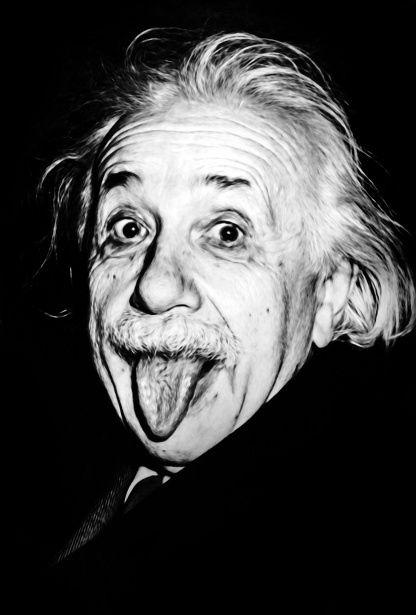
The experts in the field say, though Einstein’s approach is exact mathematically, Newton’s approach is simpler and still remains a very close mathematical approximation to gravitation.
picture courtesy: britannica










